Instruction
Is your 3 wood really more accurate than your driver off the tee?
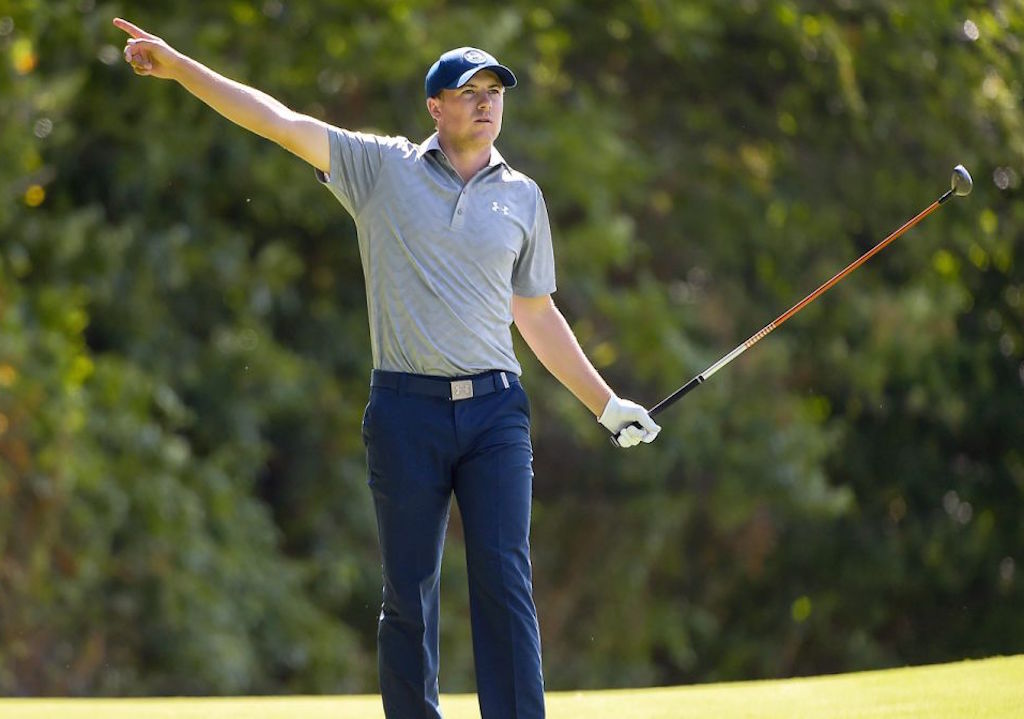
When I’m struggling with my driver, I’ll switch to a 3 wood off the tee for more control. Along with many others, I first learned this strategy from Jack Nicklaus in his prime.
During a lesson the other day, I suggested that a student try the same thing. He countered by saying that hitting a 3 wood off the tee does not work in today’s game, because the courses have become too long. In fact, he went on to say that most people don’t hit their 3 wood as accurately as they think and it’s not worth losing the “30 to 40 yards” when hitting 3 wood.
I stepped back for a second and thought, “Does he have a point? Is my information outdated?”
Later on, I decided to grab my Trackman 4 and a few random players and had them hit shots to see what really happened when they hit their driver and 3 wood off the tee. Below is the data I captured from two different players who hit their driver against their three wood.
Player 1: Driver
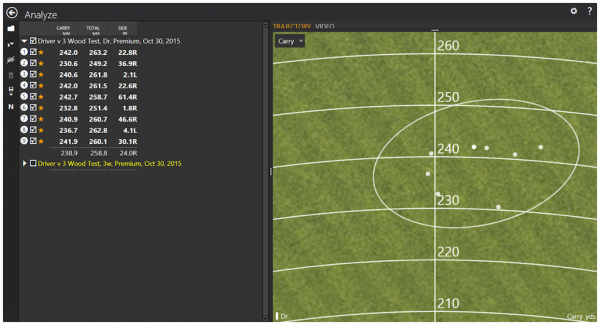
- The driver carried an average of 238.9 yards.
- It rolled out to a distance of 258.8 yards, on average.
- The average miss was 24.0 feet to the right.
Player 1: 3 Wood
- His three wood carried an average of 230.0 yards.
- It rolled out to 246.5 yards, on average.
- The misses averaged out to 10.2 feet left.
Player 1: Driver vs. 3 Wood
This player tends to miss his driver to the right, while he tends to hit the three wood in both directions, but generally closer to the target than the driver.
There wasn’t much difference between the two clubs on the carry side, only 8.9 yards, which tells me that the driver isn’t fit correctly for this student because his carry is too short for his club head speed of 102-104 mph.
Giving up yardage could mean too long of an approach shot into the green for this player, and for that reason he will likely be better off hitting driver off the tee — especially if trouble looms on the left. His misses also went consistently farther with the driver, thanks to its more forgiving, 460-cubic-centimeter head. Even the largest fairway woods are usually less than half that size, and for that reason they’re less-forgiving clubs.
Conclusion for Player 1
There is no doubt that Player 1’s 3 wood shots were indeed the better when it comes to accuracy, since this player’s miss average was 10.2 feet left. His biggest miss with the three wood was only 44.9 feet left versus 61.4 feet right with the driver. His lack of distance, however, makes driver a better choice in most cases, and his driving would likely be improved by custom fitting.
Player 2: Driver
- Carry distance of the driver was 261.7 yards and the overall total was 285 yards.
- This player has a big miss left with his driver.
- The average miss was 66.7 feet left with the three biggest misses being 151.2 feet, 156.4 feet, and 172.4 feet to the left.
Player 2: 3 Wood
- The average carry was 245.8 yards with a difference of 20 yards (235.5 to 253.5 yards) between the longest and shortest shots.
- The ball rolled out to an average of 263.2 yards with the three wood.
- The three wood had an average miss of only 35.5 feet left.
Player 2: Driver vs. 3 Wood
- Player 2 carried the ball an average of 15.9 yards longer with his driver, and the clubs had similar roll-out distances.
- The biggest miss with his driver was 172.4 feet left, while the biggest miss with the three wood was 69.0 feet left
Conclusion for Player 2
There is NO doubt that Player 2 should hit 3 wood whenever he gets under pressure or must hit the fairway due to the huge miss potential with his driver. And as far as this player hits the ball, he should still be able to hit comfortable approach shots into most par 4’s without his driver.
Final Thoughts
For shorter hitters such as Player 1, it can be true that a 3 wood off the tee is usually not the best option, despite small gains in accuracy that can be possible. For longer hitters — especially those like Player 2 who struggle with driver accuracy — 3 wood can still be a prudent play.
The takeaway is that it’s important for golfers to never blindly choose a strategy based on what’s trendy, but to instead do their own testing. It’s those findings that are truly important. My years on the lesson tee and this test prove to me that it’s still ok to hit a 3 wood when you need to get your tee shot in play.
- LIKE197
- LEGIT35
- WOW5
- LOL7
- IDHT4
- FLOP6
- OB2
- SHANK26
Instruction
The Wedge Guy: The easiest-to-learn golf basic

My golf learning began with this simple fact – if you don’t have a fundamentally sound hold on the golf club, it is practically impossible for your body to execute a fundamentally sound golf swing. I’m still a big believer that the golf swing is much easier to execute if you begin with the proper hold on the club.
As you might imagine, I come into contact with hundreds of golfers of all skill levels. And it is very rare to see a good player with a bad hold on the golf club. There are some exceptions, for sure, but they are very few and very far between, and they typically have beat so many balls with their poor grip that they’ve found a way to work around it.
The reality of biophysics is that the body moves only in certain ways – and the particulars of the way you hold the golf club can totally prevent a sound swing motion that allows the club to release properly through the impact zone. The wonderful thing is that anyone can learn how to put a fundamentally sound hold on the golf club, and you can practice it anywhere your hands are not otherwise engaged, like watching TV or just sitting and relaxing.
Whether you prefer an overlap, interlock or full-finger (not baseball!) grip on the club, the same fundamentals apply. Here are the major grip faults I see most often, in the order of the frequency:
Mis-aligned hands
By this I mean that the palms of the two hands are not parallel to each other. Too many golfers have a weak left hand and strong right, or vice versa. The easiest way to learn how to hold the club with your palms aligned properly is to grip a plain wooden ruler or yardstick. It forces the hands to align properly and shows you how that feels. If you grip and re-grip a yardstick several times, then grip a club, you’ll see that the learning curve is almost immediate.
The position of the grip in the upper/left hand
I also observe many golfers who have the butt of the grip too far into the heel pad of the upper hand (the left hand for right-handed players). It’s amazing how much easier it is to release the club through the ball if even 1/4-1/2″ of the butt is beyond the left heel pad. Try this yourself to see what I mean. Swing the club freely with just your left hand and notice the difference in its release from when you hold it at the end of the grip, versus gripping down even a half inch.
To help you really understand how this works, go to the range and hit shots with your five-iron gripped down a full inch to make the club the same length as your seven-iron. You will probably see an amazing shot shape difference, and likely not see as much distance loss as you would expect.
Too much lower (right) hand on the club
It seems like almost all golfers of 8-10 handicap or higher have the club too far into the palm of the lower hand, because that feels “good” if you are trying to control the path of the clubhead to the ball. But the golf swing is not an effort to hit at the ball – it is a swing of the club. The proper hold on the club has the grip underneath the pad at the base of the fingers. This will likely feel “weak” to you — like you cannot control the club like that. EXACTLY. You should not be trying to control the club with your lower/master hand.
Gripping too tightly
Nearly all golfers hold the club too tightly, which tenses up the forearms and prevents a proper release of the club through impact. In order for the club to move back and through properly, you must feel that the club is controlled by the last three fingers of the upper hand, and the middle two fingers of the lower hand. If you engage your thumbs and forefingers in “holding” the club, the result will almost always be a grip that is too tight. Try this for yourself. Hold the club in your upper hand only, and squeeze firmly with just the last three fingers, with the forefinger and thumb off the club entirely. You have good control, but your forearms are not tense. Then begin to squeeze down with your thumb and forefinger and observe the tensing of the entire forearm. This is the way we are made, so the key to preventing tenseness in the arms is to hold the club very lightly with the “pinchers” — the thumbs and forefingers.
So, those are what I believe are the four fundamentals of a good grip. Anyone can learn them in their home or office very quickly. There is no easier way to improve your ball striking consistency and add distance than giving more attention to the way you hold the golf club.
More from the Wedge Guy
- The Wedge Guy: Golf mastery begins with your wedge game
- The Wedge Guy: Why golf is 20 times harder than brain surgery
- The Wedge Guy: Musings on the golf ball rollback
- LIKE86
- LEGIT13
- WOW6
- LOL1
- IDHT0
- FLOP4
- OB1
- SHANK8
Instruction
Clement: Stop ripping off your swing with this drill!

Not the dreaded headcover under the armpit drill! As if your body is defective and can’t function by itself! Have you seen how incredible the human machine is with all the incredible feats of agility all kinds of athletes are accomplishing? You think your body is so defective (the good Lord is laughing his head off at you) that it needs a headcover tucked under the armpit so you can swing like T-Rex?
- LIKE0
- LEGIT2
- WOW2
- LOL0
- IDHT0
- FLOP0
- OB0
- SHANK2
Instruction
How a towel can fix your golf swing

This is a classic drill that has been used for decades. However, the world of marketed training aids has grown so much during that time that this simple practice has been virtually forgotten. Because why teach people how to play golf using everyday items when you can create and sell a product that reinforces the same thing? Nevertheless, I am here to give you helpful advice without running to the nearest Edwin Watts or adding something to your Amazon cart.
For the “scoring clubs,” having a solid connection between the arms and body during the swing, especially through impact, is paramount to creating long-lasting consistency. And keeping that connection throughout the swing helps rotate the shoulders more to generate more power to help you hit it farther. So, how does this drill work, and what will your game benefit from it? Well, let’s get into it.
Setup
You can use this for basic chip shots up to complete swings. I use this with every club in my bag, up to a 9 or 8-iron. It’s natural to create incrementally more separation between the arms and body as you progress up the set. So doing this with a high iron or a wood is not recommended.
While you set up to hit a ball, simply tuck the towel underneath both armpits. The length of the towel will determine how tight it will be across your chest but don’t make it so loose that it gets in the way of your vision. After both sides are tucked, make some focused swings, keeping both arms firmly connected to the body during the backswing and follow through. (Note: It’s normal to lose connection on your lead arm during your finishing pose.) When you’re ready, put a ball in the way of those swings and get to work.

Get a Better Shoulder Turn
Many of us struggle to have proper shoulder rotation in our golf swing, especially during long layoffs. Making a swing that is all arms and no shoulders is a surefire way to have less control with wedges and less distance with full swings. Notice how I can get in a similar-looking position in both 60° wedge photos. However, one is weak and uncontrollable, while the other is strong and connected. One allows me to use my larger muscles to create my swing, and one doesn’t. The follow-through is another critical point where having a good connection, as well as solid shoulder rotation, is a must. This drill is great for those who tend to have a “chicken wing” form in their lead arm, which happens when it becomes separated from the body through impact.
In full swings, getting your shoulders to rotate in your golf swing is a great way to reinforce proper weight distribution. If your swing is all arms, it’s much harder to get your weight to naturally shift to the inside part of your trail foot in the backswing. Sure, you could make the mistake of “sliding” to get weight on your back foot, but that doesn’t fix the issue. You must turn into your trial leg to generate power. Additionally, look at the difference in separation between my hands and my head in the 8-iron examples. The green picture has more separation and has my hands lower. This will help me lessen my angle of attack and make it easier to hit the inside part of the golf ball, rather than the over-the-top move that the other picture produces.


Stay Better Connected in the Backswing
When you don’t keep everything in your upper body working as one, getting to a good spot at the top of your swing is very hard to do. It would take impeccable timing along with great hand-eye coordination to hit quality shots with any sort of regularity if the arms are working separately from the body.
Notice in the red pictures of both my 60-degree wedge and 8-iron how high my hands are and the fact you can clearly see my shoulder through the gap in my arms. That has happened because the right arm, just above my elbow, has become totally disconnected from my body. That separation causes me to lift my hands as well as lose some of the extension in my left arm. This has been corrected in the green pictures by using this drill to reinforce that connection. It will also make you focus on keeping the lead arm close to your body as well. Because the moment either one loses that relationship, the towel falls.


Conclusion
I have been diligent this year in finding a few drills that target some of the issues that plague my golf game; either by simply forgetting fundamental things or by coming to terms with the faults that have bitten me my whole career. I have found that having a few drills to fall back on to reinforce certain feelings helps me find my game a little easier, and the “towel drill” is most definitely one of them.
- LIKE12
- LEGIT2
- WOW2
- LOL0
- IDHT0
- FLOP2
- OB0
- SHANK8
-

 19th Hole2 weeks ago
19th Hole2 weeks agoDave Portnoy places monstrous outright bet for the 2024 Masters
-

 19th Hole2 weeks ago
19th Hole2 weeks agoTiger Woods arrives at 2024 Masters equipped with a putter that may surprise you
-

 19th Hole1 day ago
19th Hole1 day ago‘Absolutely crazy’ – Major champ lays into Patrick Cantlay over his decision on final hole of RBC Heritage
-

 19th Hole3 weeks ago
19th Hole3 weeks agoReport: Tiger Woods has ‘eliminated sex’ in preparation for the 2024 Masters
-

 19th Hole1 week ago
19th Hole1 week agoTwo star names reportedly blanked Jon Rahm all week at the Masters
-

 19th Hole1 week ago
19th Hole1 week agoReport: LIV Golf identifies latest star name they hope to sign to breakaway tour
-

 19th Hole1 week ago
19th Hole1 week agoNeal Shipley presser ends in awkward fashion after reporter claims Tiger handed him note on 8th fairway
-

 19th Hole6 days ago
19th Hole6 days agoBrandel Chamblee has ‘no doubt’ who started the McIlroy/LIV rumor and why

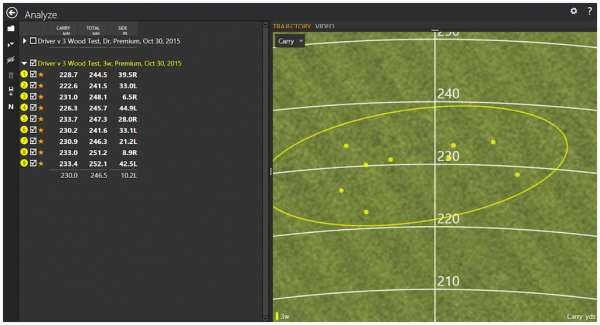
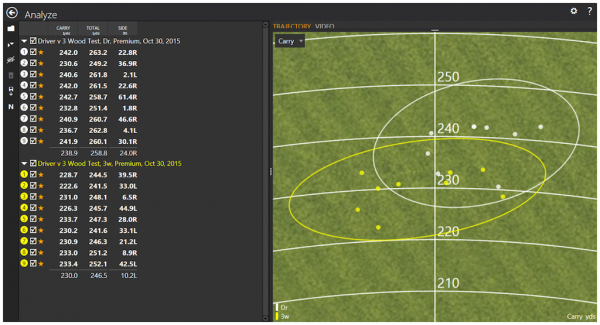
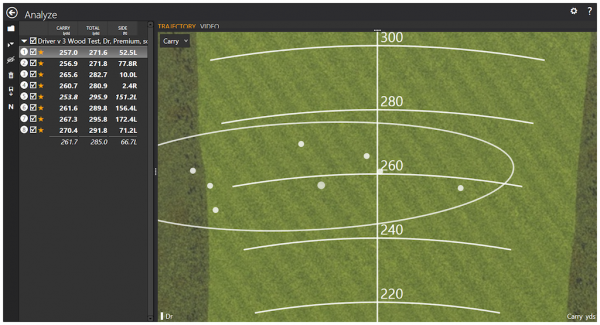
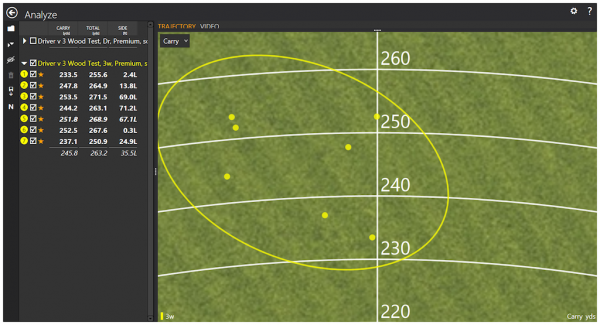
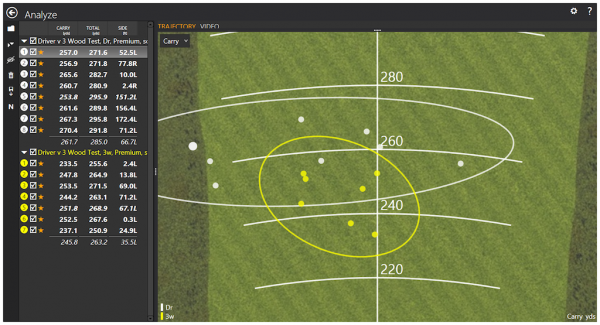














Srksi
May 21, 2019 at 7:04 am
Premise: “Struggling with driver” 260 y and 24 f right?! LOL
Struggling with driver is 240 y and 40 yards right!
Bobby
Nov 22, 2015 at 2:00 pm
I am going to let you guys in on a little secret. Go to Hirekogolf and get a Thriver, 14 degree loft like a 3 wood and 460cc head like a driver. I have a callaway drive I also use. Not scared of the driver, sometimes I need accuracy, and sometimes I need to let the big dogs eat. I can hit the ball pretty far so when I miss a certain degree left or right it goes way out. A push or a pull not a hook or slice can be OB… I don’t sacrifice to much distance with the Thriver. Hitting a driver long is a blessing and a curse… miss hit and just wave good bye and tee up your third shot!
http://www.hirekogolf.com/golf-clubs/custom-golf-clubs/golf-drivers/acer-xf-titanium-thriver-custom-assembled.html
Mat
Nov 12, 2015 at 10:52 pm
This more or less contradicts the book Every Shot Counts. In short, if you set accuracy to equal, the driver is worth it every time. There’s no question, because the extra 20-40 yards gives an easier second shot even with a not-great lie. No doubt I’d rather be 125 in the first cut than 165 in the fairway.
This limited sample size just lends itself to equipment misfittings for both players… player one misses driver right, 3w left. Huh? Both teed? Player two has a poor driver. Whatever p2 has for a 3w is the magic sauce, but that just leads to the conclusion that p2 should NEVER hit driver if driver is only marginally better but way, way less accurate. Even with that dispersion, this is a player that should be expecting another 10-25 yards on drives. With a 3w dispersion like that, there is clearly an issue with driver for any number of reasons.
rockflightxl1000
Nov 12, 2015 at 11:51 am
I tend to be a little steeper so swinging my 3 wood w/ a little less descending angle of attack than my irons doesn’t feel like such a big departure in my swing. My driver swing often doesn’t get the face and path synced up which often gives me control issues. That being said I’d rather be able to draw my 3 wood, which is shorter in length and allows me to be steeper, than fade/pull hook a drive. I wish I could play enough to be a good driver but the constant day to day/ swing to swing change is a lot to manage when all I’m trying to do is put together a good score. In summary I like swinging 3 wood b/c it doesn’t feel like such a big departure from my irons and thus lets me think about scoring. I would admit though that going driver wedge on a par 4 or on in 2 on a par five are worth while goals to strive for but not at the expense of O.B. or punching out from the forest.
Frozengolfer
Nov 11, 2015 at 8:59 pm
It certainly varies from one golfer to the next…and where their swing is at. There’s more room to miss on the face of a driver but for me, a three wood still probably hits more fairways.
In the end, a good swing is a good swing and a bad swing with any club gives you a bad result.
Steve
Nov 11, 2015 at 7:26 pm
When I first back into golf a few years ago after a long hiatus I rarely touched my driver. My friends always ripped on me for pulling my 3 wood every time but my accuracy is so much better with my wood its uncanny. Now that I’ve been back into things for awhile my driver is much better than it was, but I am never afraid to use my 3 wood and short game skills to outscore my friends even if they drive 20-30 yds further than me off the tee.
Scott
Nov 11, 2015 at 4:03 pm
I have been playing a short tree-lined country club course (est. 1950’s) for several years. Fairway accuracy is of the utmost importance. I pull 3W on 6 holes. I do think it comes down to personal preference. However, I would be interested to know the correlation between clubhead size and accuracy.
Mark
Nov 11, 2015 at 2:30 pm
Was it the same for the other players you tested? You said you tested a few players but then only gave results for two.
Confirmation bias?
Bryan
Nov 11, 2015 at 2:26 pm
I think this article leaves a lot to be desired. First, you really can’t draw any conclusions from a sample size of 2. Second, as others have pointed out, using average distance offline is problematic. Player 1 clearly has a smaller dispersion with the driver and a one way miss. Third, we really wouldn’t know what the better play is without knowing about the rest of the player’s game, the hole, and the situation. I realize that the question was simply which club is more accurate, but what good is being a little more accurate if it doesn’t help your score?
The reality is that for some players, the three wood is going to be the best option on all but the most open holes and for some players three wood is almost never the best option.
The author certainly agrees with that in his takeaway, but doesn’t provide as much guidance as he could.
Matto
Nov 11, 2015 at 1:56 am
I play a G30 11.5 and a SLDR Mini Driver 14.
The mini driver has been a revelation when I’m not driving well with the Ping….& actually WAY more accurate than I could ever hit my former 3 wood, almost to the point where I’m considering selling the G30.
billm311
Nov 10, 2015 at 8:36 pm
I am one of those players that much more confidence in my driver than my 3 wood. Both were “custom fit” and have similar shafts (same model in different weight and length, cut to match flex closely). Despite them being very similar, I get more consistent results from my driver. The problem I run in to, is on medium length holes where a driver doesn’t make sense, and an iron off the tee leaves a second shot that is just too long. In my last 5 rounds, I lost strokes on every hole that I had to use my 3 wood due to errant tee shots. Last year, it was probably the other way around.
Maybe it’s time for a new wood. Really, it comes down to practice.
Ryan
Nov 10, 2015 at 8:33 pm
Player 1 seems to have a better dispersion with the driver. Not the 3 wood.
Rolla
Nov 10, 2015 at 3:05 pm
Further analysis showing the number of shots that result in dispersion of greater than half the average fairway width would be a true test of this stategy. Put on the tee I wanna know i hit the fairway more frequently not that I’m three trees closer to somewhere I’m still chipping out from. I suspect the conclusion will be similar tho
Kevin
Nov 10, 2015 at 2:04 pm
The farther the ball travels the bigger the miss. It’s all depending on the landing spot on the fairway, pick the most generous landing spot that you are capable of carry the ball to, choose your correct club distance and bomb it down with confidence.
alexdub
Nov 10, 2015 at 12:01 pm
I think Rory is an excellent example of this. He tees off with his 3 wood 2-4 times per round regardless of the course setup. Granted, he can nail his 3 wood 300+, but I think the principle is the same. The margin of error is smaller with the wood.
Lsf_21
Nov 10, 2015 at 11:06 am
I hit both my driver and 3 wood somewhat accurate. That being said if I were told I have to hit a fairway in pulling 3 wood.
Sydney
Nov 9, 2015 at 9:10 pm
Hello Tom,
Here’s data from gamegolf for my last 20 rounds:
10* Driver –
240yds, 42%FW (33% miss right, 25% miss left)
17* Fairway –
225yds, 62%FW (20% miss right, 18% miss left)
My bad miss is a hook so I tend to aim at the right side of the fairway and many of my right misses are actually solid shots that don’t draw. I do feel more confident with the 17* and the driver is usually the second choice unless the swing feels extra good that day. So for me, 20% more fairways beats 15 yards on most holes…. Do you agree?
Charles
Nov 9, 2015 at 8:40 pm
Obviously this article mostly comes down to personal preference….I know guys that feel so comfortable with their 3w’s that they never miss fairways, and other guys that feel more comfortable with driver. I have played professionally for 5 years now, and I can tell you that other then controlling distance (laying up before a bunker or other trouble), the only reason you hit 3 wood is because the miss is more controlled. It’s all about controlling misses in golf, PARTICULARLY off the tee. I promise you 95% of golfers worst miss with a 3 wood is a thousand times better then their worst miss with a driver. Thats all it really comes down to, controlling misses.
mo
Nov 9, 2015 at 7:51 pm
IMO dump the 3 wood and go with a 14* driver. Best of both worlds and how many times does one hit 3 wood off the deck per round-especially longer hitters.
other paul
Nov 9, 2015 at 7:43 pm
I play a 3 deep and I use it all the time. I hit it stupid low, like 5-8 degrees. I love it for 300 yard par 4’s, and into the wind, and I tend to fade it versus hooking my driver. So as a lefty its a great club to avoid trouble on the right.
Taylor
Nov 9, 2015 at 7:20 pm
I would much rather hit a driver off the tee than a 3 wood. If the hole is too short for a driver, I’ll grab my next accurate club (4 iron) when I need to hit a fairway on a par 4. I’ll only grab the 3 wood when I know I have a healthy landing area. This being said…the best club you could have a is a confident 3 wood, if only I could find the swing with it.
Carlos Danger
Nov 9, 2015 at 4:58 pm
If it is…then you need to get a new driver
Progolfer
Nov 9, 2015 at 3:49 pm
When I initially saw the title of this article, I rolled my eyes because Rich Hunt wrote almost the exact same article about a year ago stating that driver was the better play; however, I was pleasantly surprised with this article! It is was well thought out, provided detailed analysis, and came to a profound conclusion– ALL GOLFERS ARE DIFFERENT.
I can’t stand it when I see golfers (or anyone, for that matter) making a decision based on what others are doing. Find what’s best for YOU, and you’ll be happier and better off for it.
Thanks for the article!
shiimmy
Nov 9, 2015 at 3:40 pm
Thanks for the article!
I wonder what the difference between a conventional 3 wood and a super high-lofted driver (13.5*+) would be? I feel like I’m more accurate with the bigger head/face, but I often wonder what AoA has to do with accuracy.
golfraven
Nov 9, 2015 at 3:11 pm
I played the 2015 season only with a 3 wood in the bag and wonder now if this was good strategy, after playing with driver in the bag this weekend in competition and hit 100% fairways when I pulled the driver. Maybe the wood helped me to hit it more accurately so maybe it was worth it. Didn’t have issues with the wood even on longer holes but now that weather is getting colder I need to hit driver to have same results.
David
Nov 9, 2015 at 2:27 pm
The driver and 3 wood pictures for Player 1 are not under the correct heading. They need to be switched.
Zak Kozuchowski
Nov 9, 2015 at 2:58 pm
Thank you for letting us know, David.